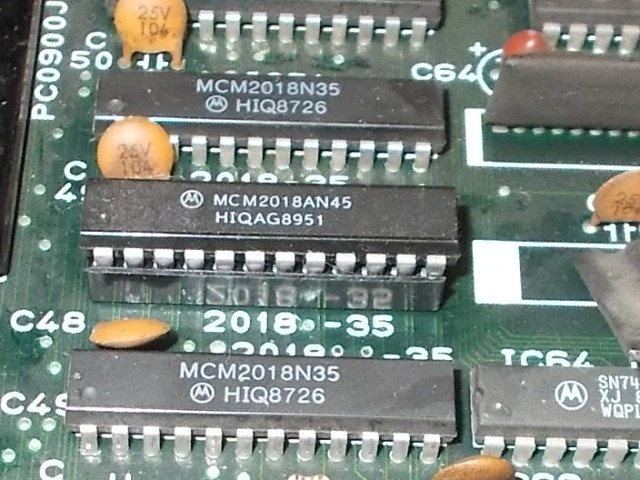Recently I found in my pile of PCBs an original Prehistoric Isle in 1930, I remember I bought it as faulty on eBay some years ago but never had the chance to look at it for repair.Recently I decided it was time to finally do it.Board was in good condition :
As always I do before powering the boards up for first time I made some checks with a multimeter and found that there was almost a short between GROUND and +5V, only 9.7 Ohm of resistance exactly :
The PCB is actually a two stack one with a top CPU board and bottom VIDEO one hence I separated them and figured out the short was in the bottom one :
As said, this was not what is called a 'dead short' with zero Ohm of resistance across GROUND and +5V , therefore it was impossible to locate it with normal equipment, whatever you are gonna to use (multimeter, ohmmeter, ESR meter) you would obtain always the same value of resistance all over the board.
At this point I had two options : desoldering all the components one by one until catching the almost shorted one(s) or resort to some special equipment that was able to locate them with a certain precision.After some reseraches I came across this tool, the 'LeakSeeker 89' from EDS Inc. :
It's essentially an autoranging fault locator (with a range from zero to 300 ohms) that can locate not just shorted, but 'leaky' parts as well.You can read more about here :
Here's how it works .
It was just what it suited me so I ordered a kit which came in the mail after some time.The assembing was pretty easy and quick :
After some practice with this equipment I was able to narrow the field of search of the short in this particular area of the board :
I started to removed some ICs in this area :
I found a couple of faulty 74HCTLS157, both were from Samsung manufacturer.This lead me think they perhaps belonged to the same bad lot so I pulled the others in the involved area.Some were good but other three were bad for a total of five ICs of same type :All were 'leaky' with low resistance between power supply pins, the 'LeekSeeker 89' made his job, it was really worth the buy, money well spent!
I installed good chips and powered up the board for first time.To my surprise it booted into game
I played some games with no other issue found.So this was another succesfull repair and a great shoot 'em up added to my collection.





















































